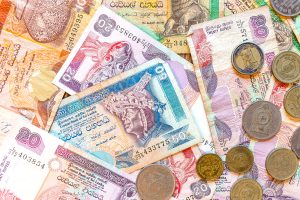Over the past two decades, Sri Lanka’s economic trajectory has been significantly shaped by assistance from the International Monetary Fund (IMF). Through a series of programs, the IMF has sought to stabilize the country’s economy, enforce fiscal discipline, and promote sustainable growth. To date, Sri Lanka has engaged in 17 IMF programs. The most recent of these initiatives is the Extended Fund Facility approved in 2023.
A critical evaluation of the policy objectives within these programs reveals recurring themes as well as unique aspects specific to each intervention.
Key Factors Behind the 5 Most Recent IMF Programs
This analysis spans the five most recent IMF programs: the Standby Arrangement (SBA) in 2001, the Extended Fund Facility (EFF) and Extended Credit Facility (ECF) in 2003, another SBA in 2009, the EFF in 2016, and the most recent EFF in 2023. Each program was launched in response to specific economic challenges faced by Sri Lanka, ranging from fiscal deficits and currency devaluation to post-war reconstruction and the impacts of global financial crises.
In 2001, despite achieving a 6 percent GDP growth rate in 2000, Sri Lanka’s economy encountered significant fiscal challenges. The rapid escalation in government spending and borrowing by public enterprises resulted in a fiscal deficit of approximately 10 percent of GDP. This situation was exacerbated by the depletion of foreign reserves, depreciation of the exchange rate, and rising short-term interest rates, underscoring the necessity for IMF intervention. The Standby Arrangement introduced in 2001 aimed to restore macroeconomic stability, enhance public sector finances, and rebuild reserves through the implementation of a flexible exchange rate system.
By 2003, Sri Lanka had reached a pivotal moment with the initiation of a peace process. The government introduced “Regaining Sri Lanka,” a comprehensive economic reform and poverty reduction strategy aimed at accelerating growth and alleviating poverty through private sector-led development. This approach marked a departure from previous policies focused on redistribution and transfers. The Extended Fund Facility (EFF) and Extended Credit Facility (ECF) programs established in 2003 were designed to support these reforms, stabilize the economy, and restore fiscal sustainability.
The global financial crisis of 2008 had a severe impact on Sri Lanka. Lax fiscal policies, dependence on short-term external financing, and an overvalued exchange rate rendered the country particularly vulnerable. The sudden cessation of capital flows and a sharp decline in foreign reserves necessitated IMF intervention. The 2009 Standby Arrangement (SBA) was implemented to facilitate adjustment to the external shock, restore fiscal health, and stabilize the financial system while preventing a disruptive devaluation.
The Extended Fund Facility in 2016 was introduced during a period of political transition, presenting an opportunity to reset macroeconomic policies. Despite underlying economic momentum, Sri Lanka faced challenges due to unbalanced policies and a difficult external environment. The Extended Fund Facility of 2016 aimed to implement structural reforms to enhance growth, reduce public debt, and strengthen financial stability, thereby laying the groundwork for sustained economic development.
The most recent Extended Fund Facility in 2023 was implemented in response to an unprecedented economic crisis, compounded by substantial fiscal imbalances, loss of access to international capital markets, and the repercussions of COVID-19. The program aimed to restore macroeconomic stability and debt sustainability, alleviate the impact on vulnerable populations, and bolster financial sector stability. Additionally, it focused on governance reforms to reduce corruption vulnerabilities and enhance growth potential.
Analysis of Policy Objectives
The table below presents the aims and objectives of recent IMF programs in Sri Lanka. The objectives of each program have been coded using the program name. The objectives of these programs reflect both recurring themes and context-specific priorities.
A critical examination of the policy objectives of these IMF programs reveals 11 themes with which the recent IMF programs align. The figure below visualizes these 11 themes and how they appear in each IMF program.
The figure above illustrates that all five recent IMF programs aimed to achieve revenue-based fiscal consolidation, highlighting Sri Lanka’s ongoing struggle with fiscal deficits and its failure to maintain progress across successive programs. Additionally, these IMF programs share other significant policy objectives, including restructuring state-owned enterprises (SOEs), strengthening foreign exchange reserves, and enhancing financial system stability.
Among the five recent IMF programs, four – all but the SBA in 2009 – have focused on SOE restructuring. This issue remains a policy priority in the latest IMF program, emphasizing Sri Lanka’s persistent challenges in reforming SOEs, particularly the Ceylon Electricity Board and the Ceylon Petroleum Corporation.
Strengthening foreign reserves has been a common target in most programs, reflecting the typical motivation for seeking IMF assistance during periods of foreign reserve shortages.
However, certain policy objectives were specific to one or two programs, representing key differences among recent IMF program goals. Notably, post-conflict reconstruction and humanitarian aid were objectives in only two programs: the ECF/EFF program in 2003 and the SBA in 2009, both initiated after extended civil conflict. The 2003 program followed peace talks with the LTTE, while the 2009 program commenced after the war ended.
Moreover, themes such as restoring price stability and public debt sustainability, mitigating corruption risks, and empowering economically disadvantaged groups were prioritized in only two recent IMF programs, particularly within the 2023 EEF, due to the specific contextual needs at the time.
Conclusion
The examination of IMF programs in Sri Lanka since 2000 highlights both continuity and change in policy objectives. Recurring themes such as revenue-based fiscal consolidation, SOE restructuring, and financial stability underscore persistent economic challenges. Meanwhile, the unique objectives of each program reflect the specific socioeconomic contexts at the time. This analysis not only illuminates the evolving nature of IMF interventions in Sri Lanka but also underscores the importance of context-specific policy responses to address Sri Lanka’s dynamic economic landscape.

































